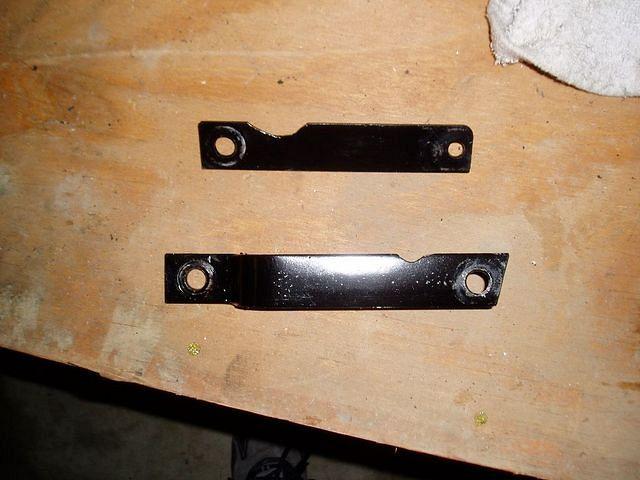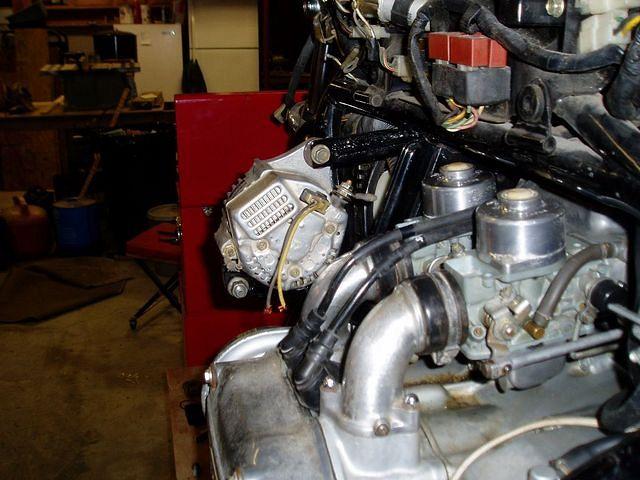Denso 40 Amp Alternator
Posted: Wed Mar 18, 2009 7:50 pm
Some Background. My Dressed 1000 and I spend a lot of time at the tunnels and bridges in the area parked in traffic. A lot of time idling in mid summer with the fan cycling on and off. I sit there and watch the voltage slowly going down. It is very nerve-racking so I have decided to up-grade the charging system. I have a 75 on the table that I am building so I am using that as my "Jig" to get this setup for my dresser.
This will be a several part document to show how to install a 40 Amp Alternator on a GL 1000. This particular model has an internal regulator which simplifies installation greatly. It does require a feedback circuit to tell it how much power to put out. I have contacted the Manufacturer to attempt to find out some rpm vers output info and such. My goal is to have at least 30% of max output available at idle. I thought while waiting for that info I would start the installation process.
Denso Part # 100211-4531 I saw one for 129 of Flea Bay but most go for 159 at tractor supply stores like this http://www.mascostartersandalternators. ... _list&c=12 I aquired mine through a friend and the price was right.
#1 Rule No criticizing my poor welds!!

Fore and aft alignment is not finalized yet so I have set it up to shift it minor amounts using washer stackups to adjust it.

The Upper Bracket required trimming to go around the frame tube. Also you will notice that it has not been slotted for belt tensioning. I am hoping to find a belt that will require minimal adjustment and once the drive pully size is determined I will resolve this issue.

Both brackets

Plain flat stock did not provide enough lateral support so I cut more peices and welded them to the back to stiffen them.

When bolted up it is plenty strong.



This will be a several part document to show how to install a 40 Amp Alternator on a GL 1000. This particular model has an internal regulator which simplifies installation greatly. It does require a feedback circuit to tell it how much power to put out. I have contacted the Manufacturer to attempt to find out some rpm vers output info and such. My goal is to have at least 30% of max output available at idle. I thought while waiting for that info I would start the installation process.
Denso Part # 100211-4531 I saw one for 129 of Flea Bay but most go for 159 at tractor supply stores like this http://www.mascostartersandalternators. ... _list&c=12 I aquired mine through a friend and the price was right.
#1 Rule No criticizing my poor welds!!

Fore and aft alignment is not finalized yet so I have set it up to shift it minor amounts using washer stackups to adjust it.

The Upper Bracket required trimming to go around the frame tube. Also you will notice that it has not been slotted for belt tensioning. I am hoping to find a belt that will require minimal adjustment and once the drive pully size is determined I will resolve this issue.

Both brackets

Plain flat stock did not provide enough lateral support so I cut more peices and welded them to the back to stiffen them.

When bolted up it is plenty strong.



